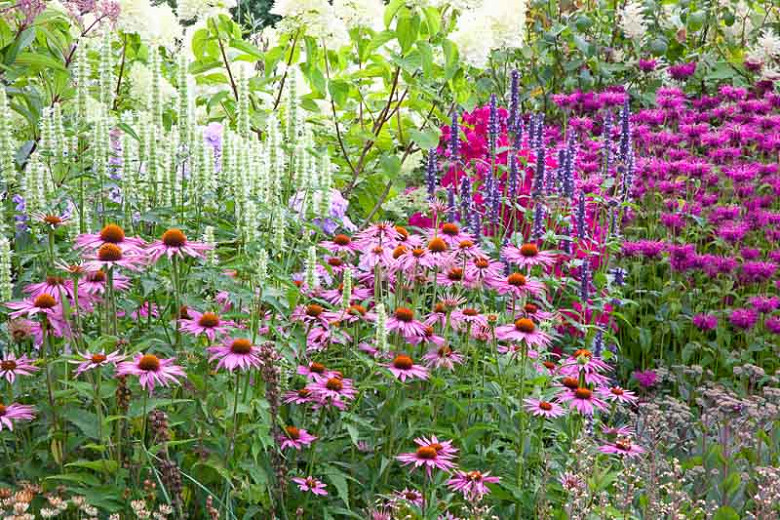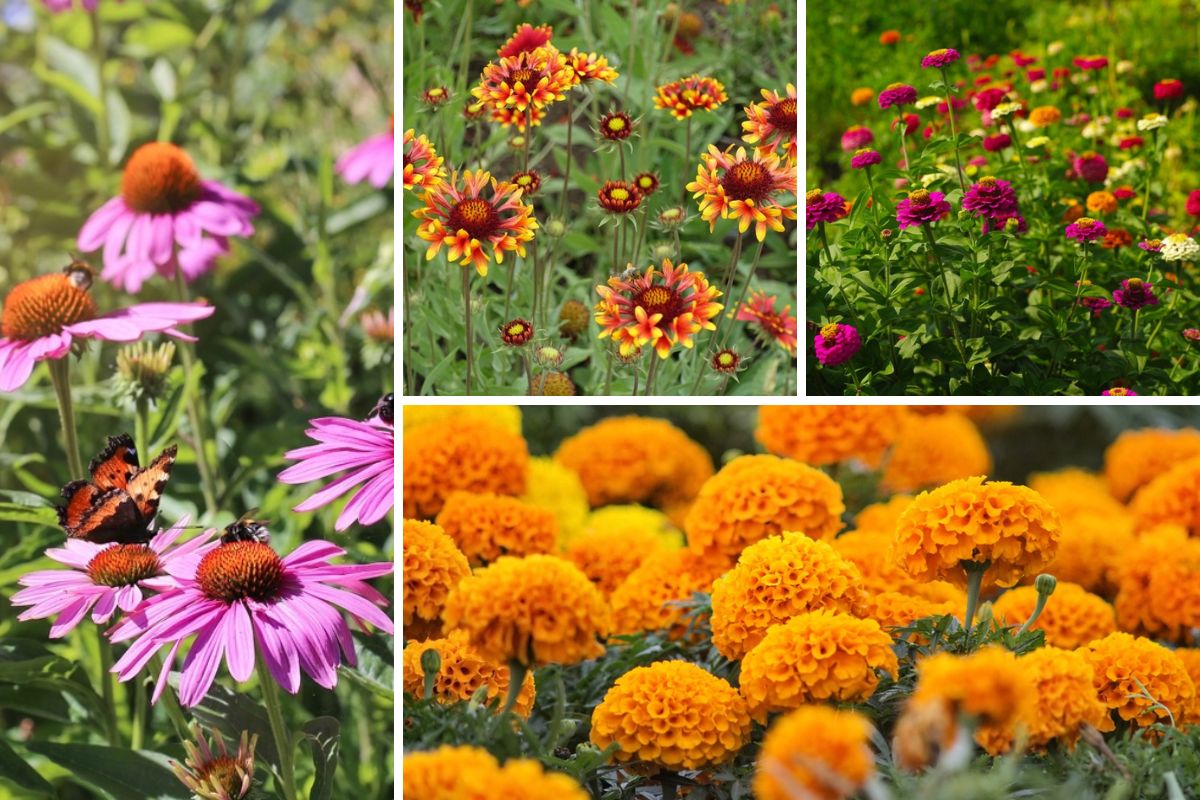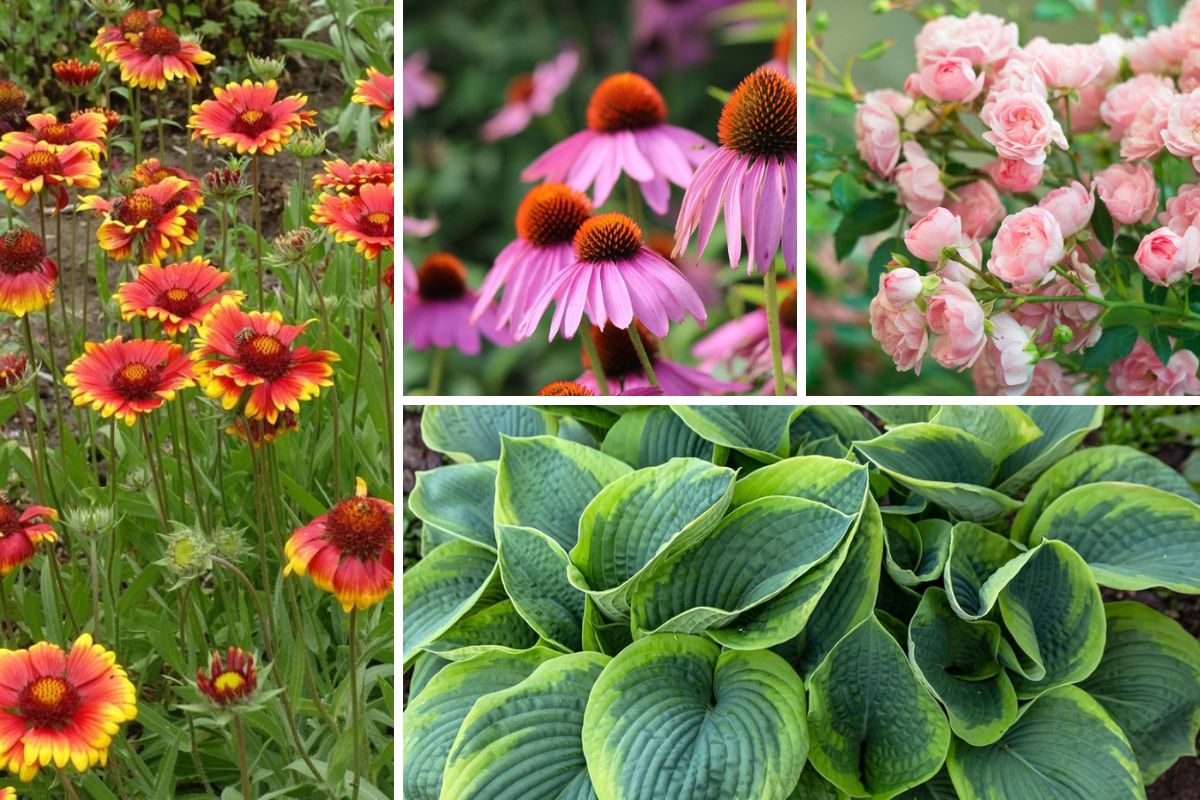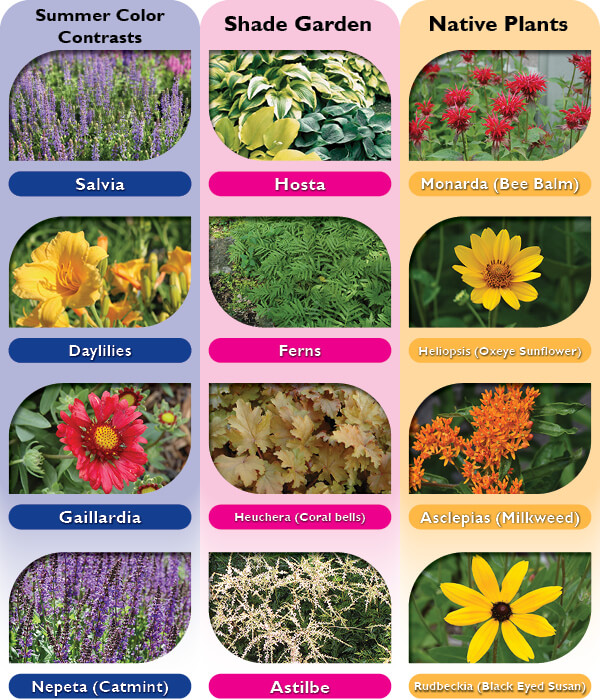Bee Balm Companion Plants That Will Attract Bees And Butterflies
Bee balm (Monarda didyma) is a beautiful and versatile plant that is native to North America. It is a member of the mint family and has attractive, fragrant flowers that bloom in shades of pink, red, and purple. Bee balm is a popular choice for pollinator gardens, as it attracts a wide variety of bees, butterflies, and other insects.
In addition to being a beautiful and beneficial plant, bee balm is also a good companion plant for other garden plants. When planted with compatible companion plants, bee balm can help to improve the health and productivity of its neighbors.
Here are some of the best companion plants for bee balm:
- Tomatoes: Tomatoes and bee balm are a classic companion plant combination. Bee balm helps to deter pests that can damage tomatoes, such as aphids and spider mites. In return, tomatoes provide bee balm with support and shade.

- Peonies: Peonies and bee balm have similar growing conditions and complement each other's colors well. Peonies add height and structure to the garden, while bee balm provides a splash of color.

- Echinacea: Echinacea and bee balm are both native North American plants that attract pollinators. They also have similar medicinal properties. Echinacea is often used to boost the immune system, while bee balm is used to treat sore throats and other minor ailments.

- Lilac: Lilac and bee balm bloom at different times of the year, so they can provide interest in the garden throughout the growing season. Lilac provides early spring color, while bee balm blooms in mid-summer.
- Penstemon: Penstemon and bee balm are both tall, upright plants that attract pollinators. They also have similar flower colors, so they can be planted together to create a cohesive look.

In addition to these specific companion plants, bee balm can also be planted with a variety of other flowers, herbs, and vegetables. When choosing companion plants for bee balm, it is important to consider the plants' growing conditions, flowering times, and pest and disease resistance.
By planting bee balm with compatible companion plants, you can create a healthy and productive garden that is also a haven for pollinators.
Bee balm is a beautiful and fragrant herb that is a popular addition to many gardens. It is also a great companion plant for other flowers and vegetables. Some of the best bee balm companion plants include:
- Tomatoes: Bee balm can help to repel tomato pests such as aphids and whiteflies.
- Peonies: Bee balm and peonies both thrive in full sun and well-drained soil. They also have similar bloom times, so they can add color and interest to your garden for weeks.
- Echinacea: These two plants attract pollinators and can help to improve the health of your garden soil.
- Lilacs: Bee balm and lilacs can be planted together to create a colorful and fragrant display.
- Penstemon: These two plants have similar water and soil requirements, and they can help to attract butterflies and hummingbirds to your garden.
For more information about bee balm companion plants, please visit Gardenia Inspiration. This website provides detailed information on the best plants to grow with bee balm, as well as tips on how to create a thriving companion plant garden.
FAQ of bee balm companion plants
- What are the best companion plants for bee balm?
Bee balm is a popular nectar-rich plant that attracts a variety of pollinators, including bees, butterflies, and hummingbirds. As such, it can be beneficial to plant it near other flowers that attract the same pollinators. Some good companion plants for bee balm include:
* Phlox
* Peonies
* Tomatoes
* Coneflowers
* Zinnias
* Echinacea
* Lavender
* Marigolds
* Cosmos
- What are the benefits of companion planting with bee balm?
There are several benefits to companion planting with bee balm. First, it can help to attract beneficial insects to your garden. These insects can help to pollinate your plants, control pests, and improve soil health. Second, companion planting can help to improve the overall health and productivity of your plants. For example, bee balm can help to repel pests and diseases, and it can also improve the drainage and aeration of the soil.
- What are some tips for companion planting with bee balm?
When companion planting with bee balm, it is important to consider the following factors:
* The size and growth habit of the plants. Bee balm can grow quite tall, so it is important to plant it with other plants that have similar needs.
* The sun exposure requirements of the plants. Bee balm prefers full sun, so it is important to plant it with other plants that also require full sun.
* The soil conditions. Bee balm prefers well-drained soil, so it is important to plant it with other plants that also prefer well-drained soil.
- How far apart should bee balm plants be planted?
Bee balm plants should be planted 18 to 24 inches apart. This will give them enough space to grow and spread.
- What are some common pests and diseases that affect bee balm?
Bee balm is susceptible to a few pests and diseases, including:
* Aphids
* Spider mites
* Powdery mildew
* Rust
To control pests and diseases, it is important to inspect your bee balm plants regularly and to take action as soon as you see any problems. You can also help to prevent pests and diseases by planting bee balm in a well-drained location and by providing it with adequate sunlight and water.
Image of bee balm companion plants
Here are 5 different images of bee balm companion plants from Pinterest:
- Bee balm and coneflower. Bee balm and coneflower are both tall, nectar-rich plants that attract a variety of pollinators. They can be planted together in a sunny border or meadow.

- Bee balm and black-eyed Susan. Black-eyed Susan is another tall, sunny-loving plant that attracts pollinators. It blooms in a variety of colors, including yellow, orange, and red.

- Bee balm and phlox. Phlox is a low-maintenance, drought-tolerant plant that blooms in a variety of colors. It can be planted in front of bee balm to add some color and texture to the border.

- Bee balm and tomatoes. Tomatoes are a good companion plant for bee balm because they attract different pollinators. The bees that are attracted to bee balm will help pollinate the tomatoes, and the tomatoes will provide shade for the bee balm in the hot summer sun.

- Bee balm and lilies. Lilies are tall, fragrant flowers that attract pollinators. They can be planted behind bee balm to add some height and drama to the border.


Post a Comment for " Bee Balm Companion Plants That Will Attract Bees And Butterflies"